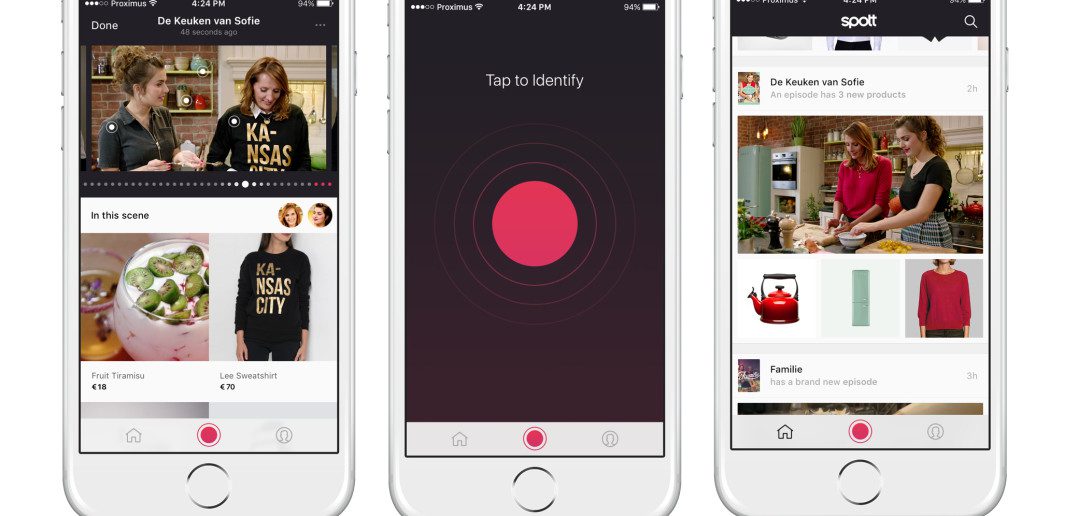The digital industry has grown rapidly to become a major source of ad investments, at least in part thanks to two factors: its ability to provide marketers with large amounts of rich data and the proximity between digital advertising and the ecommerce point of sale. Television broadcasters face a challenge to bring these capabilities into their own advertising portfolios.
This is where Appiness comes in. The company’s technology, which can be used in the standalone Spott app (top photo) or integrated as a white label solution, offers a second-screen shopping experience that brings a limitless variety of purchasable goods within tapping distance. Appiness allows broadcasters to combine the reach of TV with the targeting power of digital media and the revenue generation power of e-commerce.
In a cooking show, for example, recognition technology identifies the clothes & accessories worn by the presenters, as well as the equipment used in the kitchen. Users are then presented with e-commerce opportunities to buy those products, or in some cases similar alternatives.
What’s in it for broadcasters and content producers?
Firstly, an increase in the value of product placement, as items can be bought while viewers are watching their favorite show.
Secondly, the value of advertising will increase, as it is easier for brands to combine a call to action linked to their TV campaign. As an example, Appiness tested a Mercedes ad in combination with a call to action to book a test ride, with very good results on lead generation.
Last, but not least, data and insights. Appiness’s solution offers broadcasters a rich layer of information about their viewers’ interests and purchase intentions, which allows them to offer better targeting options to advertisers.
Case study with Belgian broadcaster, Medialaan
Appiness teamed up with Medialaan, advertising agency BBDO and research company iMinds Living Labs to test the technology on cookery show De Keuken van Sofie, soap opera Familie and — to trial international acquired content — hit US comedy The Big Bang Theory.
The results demonstrate the technology’s potential value to broadcasters. During the three-months testing period:
- 89% indicated that the technology was fun to use
- 96% indicated that the technology was functional to use
- 7% of the viewers had actually bought something, and the buying activity extends beyond the immediate show
The female target audience saw the application as a Pinterest linked to their favorite content, while the male target audience approached it as Shazam for images.
Why this matters for the TV industry
Data and customer insights are at the centre of the emerging battleground for advertising spend. TV is already among the best measured media, and the addition of further layers of data on viewer behaviours and preferences allows television to compete even more effectively for digital budgets.
Technology like that offered by Appiness can make any episode interactive, notably by integrating it into existing owned applications to increase engagement and enrich the user experience. Look us up at MIPTV, or online, to find out more!




